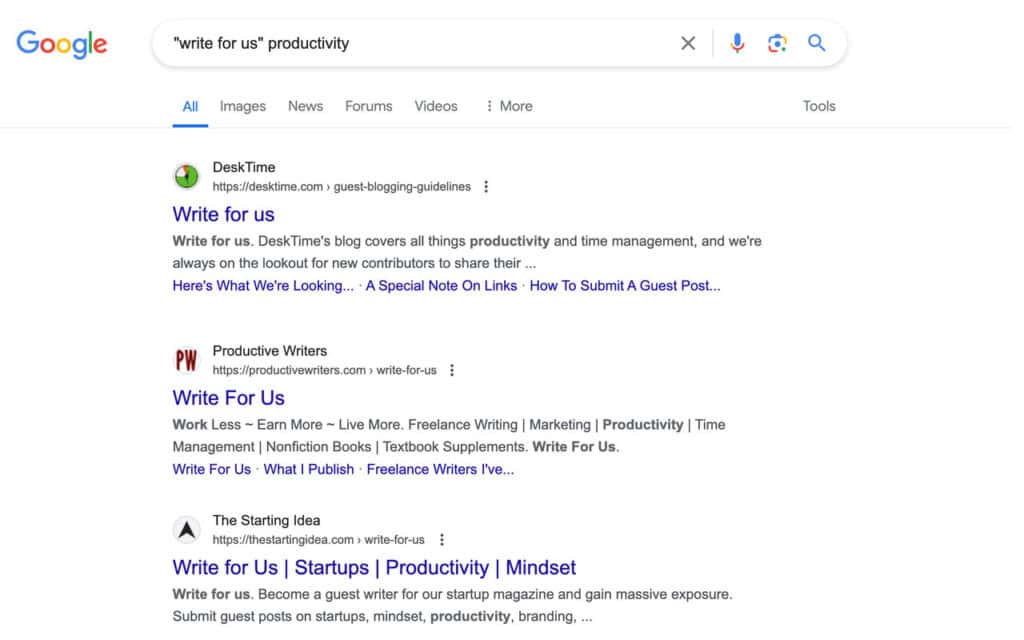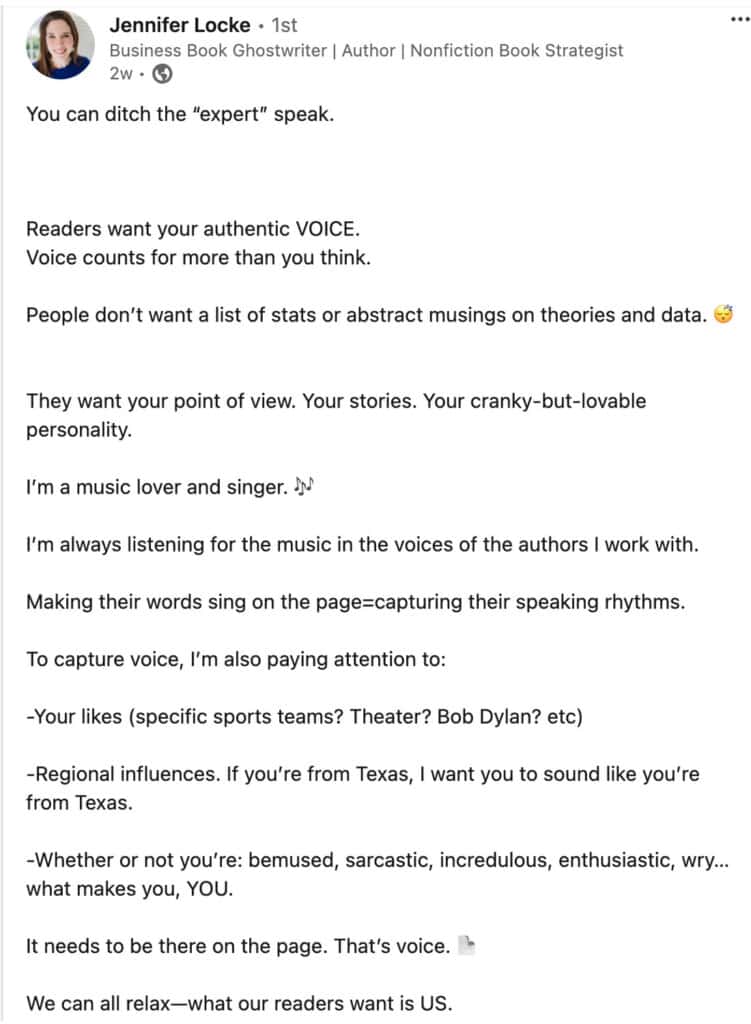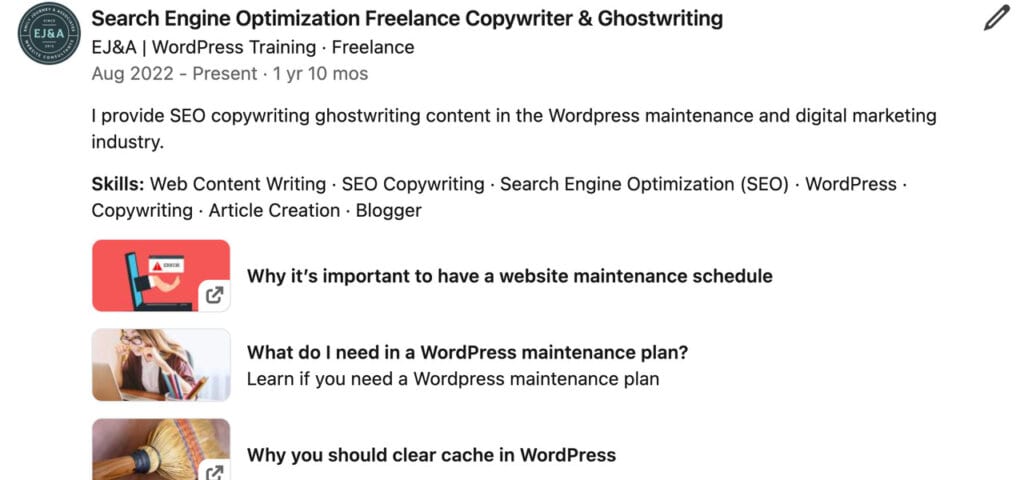You just landed your first writing gig!
You’re thrilled, but then you realize: there’s no byline for your work.

When you want to land another freelance client, you’re back at the square one: no sample to show, no way you can build a portfolio.
It feels like a freelance Catch-22.
You can’t tell this new prospect of your writing job because it’s ghostwritten but you can’t land the work without a portfolio of your work.
And, can you even talk about your ghostwriting clients with other prospects?
So, what can you do?
Without violating any rules or crossing NDA lines, you can still build a ghostwriting portfolio.
I’ll share my best tips to creating that ghost writer portfolio and how to market your ghostwriting business.
And if you have time, make sure to check out my video on building a ghostwriting portfolio!
What Does It Mean to Be a Ghostwriter?
Ever wondered what a ghostwriter does?
Well, a ghostwriter writes all types of content content such as:
- articles
- speeches
- books
- blog posts
- email newsletters
- web copy
- social media posts
- whitepapers
- case studies
- landing pages
But, a ghostwriter doesn’t get the credit for all of that work.
Instead, the credit goes to your client or someone in their company.
None of your work gets attributed to you, meaning you can’t publicly share it unless your ghostwriting client gives you the green light.
So, why would someone want to be a ghostwriter in the first place?
Because it’s highly profitable.
Established ghostwriters – one with a body of work with a portfolio – can earn between $60-$111k per year.
For freelance writers, the majority earn around $60k per year, meaning you can substantially earn more income as a ghostwriter.
So, if this seems like a lucrative service to offer, let’s look at different ways to build a ghostwriter portfolio and then look at how you can share your work to prospective clients.
3 Easy Ways to Create Samples for Your Ghostwriting Portfolio
If you are a beginner and have no samples of your writing to show clients, then the first step to ghostwriting is to create those samples.
1. Guest Post
A popular method is to guest posst on sites your ideal clients read.
Guest postings relies on businesses, publications, and websites to offer this opportunity.
They will have guidelines to help you figure out their audience and brand voice.
For example, for my niche of SaaS content writing, I would focus on SaaS businesses.
Zapier offers guest writing so that’s one way to land a guest post.
For this method, though, I would focus on writing about your niche topic or specialization.
In your author bio you can mention you are a writer AND ghostwriter for CEO’s or influencers.
To find guest posting opportunities, run a Google search with “write for us” and your niche.

Make sure to check out each potential guest posting site and see if:
- the audience are made up of your ideal client
- has topics you can fill the gap with your expertise
- you don’t have to pay to guest post (ie. free to guest post)
2. Write on Medium
If you’re interested in growing your personal brand, consider writing on Medium.
Medium is a blogging platform where you can write freely about any topic of your interest.
I started on Medium when it first started and use it as a place to write whatever I want.
But, as a new ghostwriter without a portfolio, you can use Medium in place of a blog and write content that can appeal to prospects.
For example, Melany Brita is a ghostwriter and writes on Medium and sometimes creates ghostwriting articles.

The same way you would guest post in your niche, you would write about your niche topic on Medium and try to mention that you also ghostwrite while you write those posts.
If you want to “guest post” on Medium’s many publications, you do have to sign up to the Medium partner program. It’s pretty cheap and you get access to all the content on Medium!
3. Write About Ghostwriting
Finally, you can write about ghostwriting in your guest posts, on Medium, on your blog, and on social media.
This is probably the best way to market your ghostwriting services.
For example, Writeto1k course student, Jennifer Locke not only has “ghostwriter” in her LinkedIn bio, she creates relevant posts about her ghostwriting service – like having an authentic voice in your content – to promote her services.

Hopefully these methods can help you start creating samples to help you land some ghostwriting clients.
Now, the next part in building a ghostwriting portfolio is the question about how to share your samples when there’s no attribution. What is a new ghostwriter to do?
Share Your Work Internally
Want to land more ghostwriting gigs?
Here’s a tip: tell your ghostwriting client that without samples, it’s tough to prove your experience and build your portfolio.
Sometimes, the client you’re negotiating with might need to sign an NDA.
This means they can’t distribute your work or reveal it was ghostwritten. Your ghostwriting client might be good with this and give you the go-ahead to share your work.
One thing many ghostwriting clients won’t mind is if you share their work internally, ie. in your email pitches.
When you secure a ghostwriter client, ask them if you can share your future work in your pitches to help you grow your client base.
Most clients should be fine with this method, but some won’t.
Share Externally
If your client doesn’t mind you share your work (without an author bio) on LinkedIn or on your portfolio page, then go ahead and market the heck outta it!
I’ve picked up a few ghostwriting clients and sometimes they don’t mind sharing it on LinkedIn.

Ask the client before you add them to your portfolio or on LinkedIn.
As simple template to use,
“I’m glad you enjoyed the article.
Wondering if I could add it on LinkedIn as a ghostwriting project?
Let me know.
Thanks, Elna”
As Descriptions on Your Portfolio
If you aren’t allowed to include a link or the business name on your portfolio, what you can do instead is share details about the project and describe what you did.
Hannah Sandoval is a fiction ghostwriter and she often shares descriptions of her work.

Hannah expertly details her ghostwriting projects as a way to help her market your ghostwriting service.
A potential client who needs a book written can look at this and see the value Hannah gives and hire her on the spot.
Secure Testimonials
By far the best way to land more ghostwriting clients is to get past clients to vouch for you.
If possible, with every guest post you write or do free work for friends and family, secure a testimonial of the work you provided.
When I started, I had other freelancers give me testimonials after I did some blog writing of graphic design work.
Over time, I secured testimonials from my clients simply by asking them!
If you feel they are too busy, offer to write the testimonial for them and they can approve it.
Get a Reference
If your ghostwriting client doesn’t want to create a testimonial for your service because it might hinder their reputation, you can ask if they can be a reference for you.
This way, if someone is interested in your writing, you can let them know you would be happy to provide them with a past/current client’s contact information upon request.
Sometimes this is better if the previous work you’ve done doesn’t jive well with what the new prospect wants.
Market Your Service
I know I casually mentioned this but it’s very important to continually market your ghostwriting service because you may not have a detailed portfolio to speak for you.
You can do as Hannah has done on her portfolio page by sharing a description of your work.
At the bottom or top of that page you can mention that you can give them more work and information about your ghostwriting upon request.
I would also create a title with ghostwriter in it and get on some podcasts and write on Medium about ghostwriting to let the internet know what you offer!
These are ways to get your name out there and show people that you are also a ghostwriter that could potentially help them.
Ready to Create a Ghostwriter Portfolio?
I hope these tips help you become a profitable ghostwriter.
I know it’s challenging to get out there and with being a ghostwriter, it’s even more difficult!
So, these ways can help you get more eyes to your portfolio and hopefully more jobs!
Let me know in the comments if these helped you!
Have fun!




1 Comments